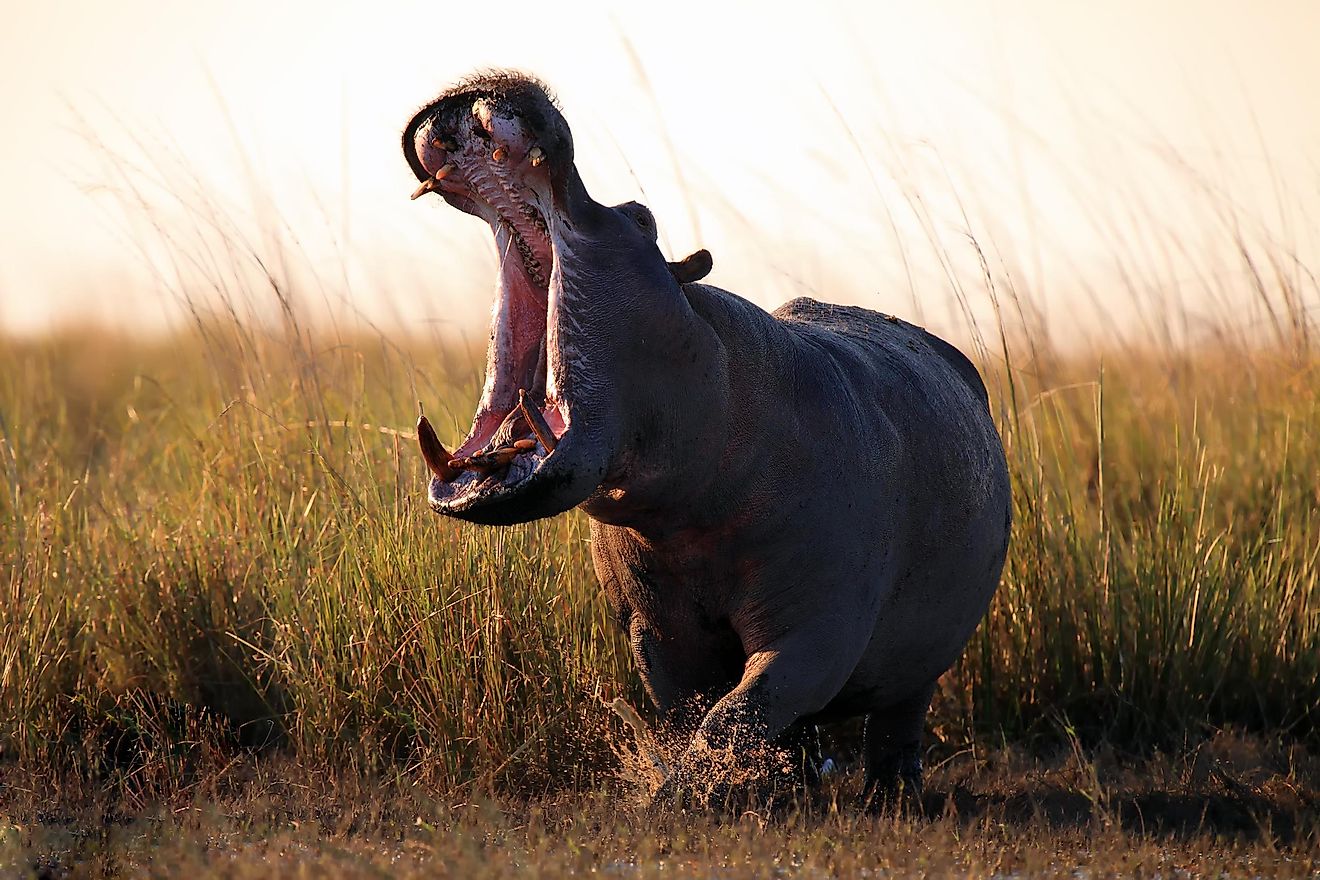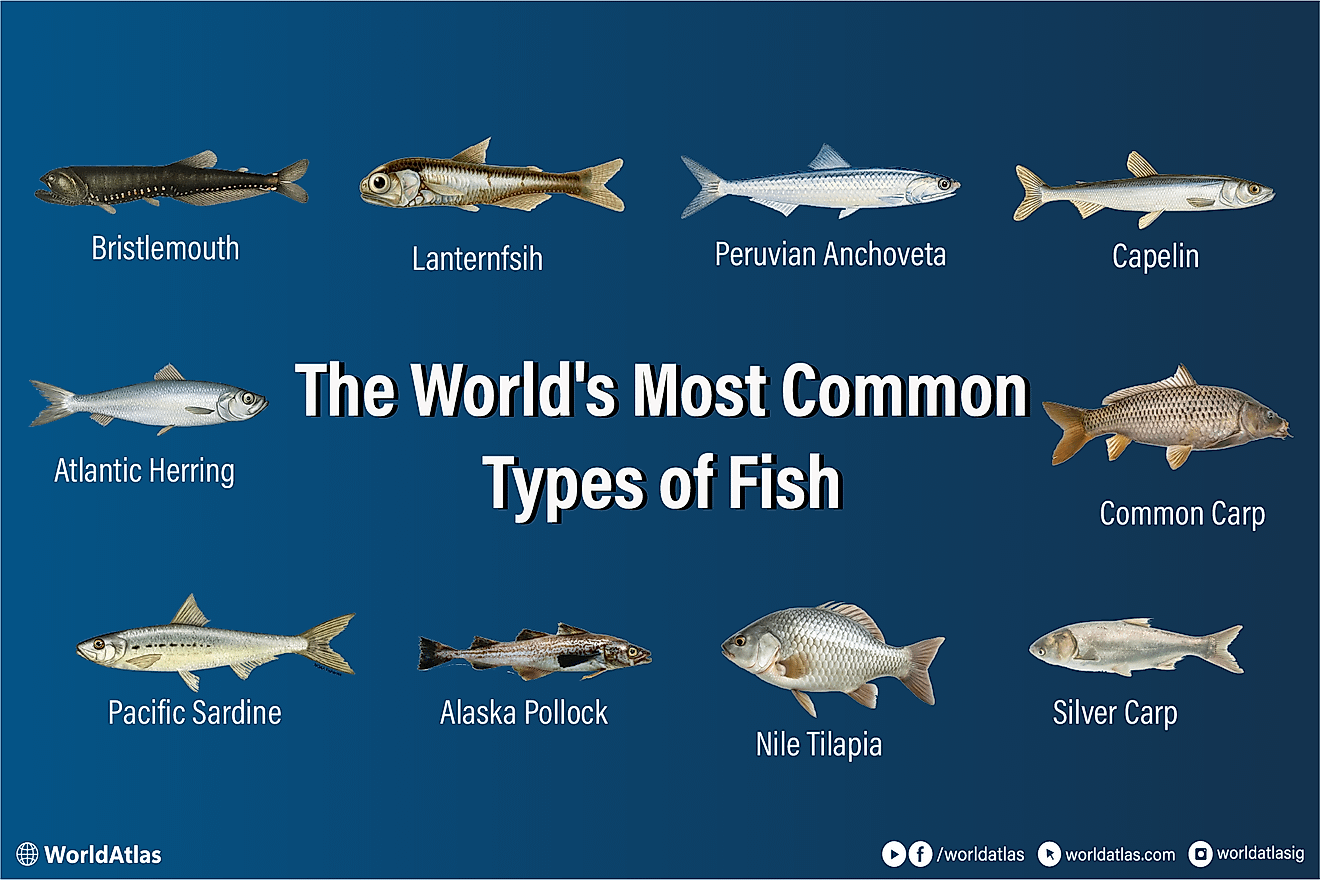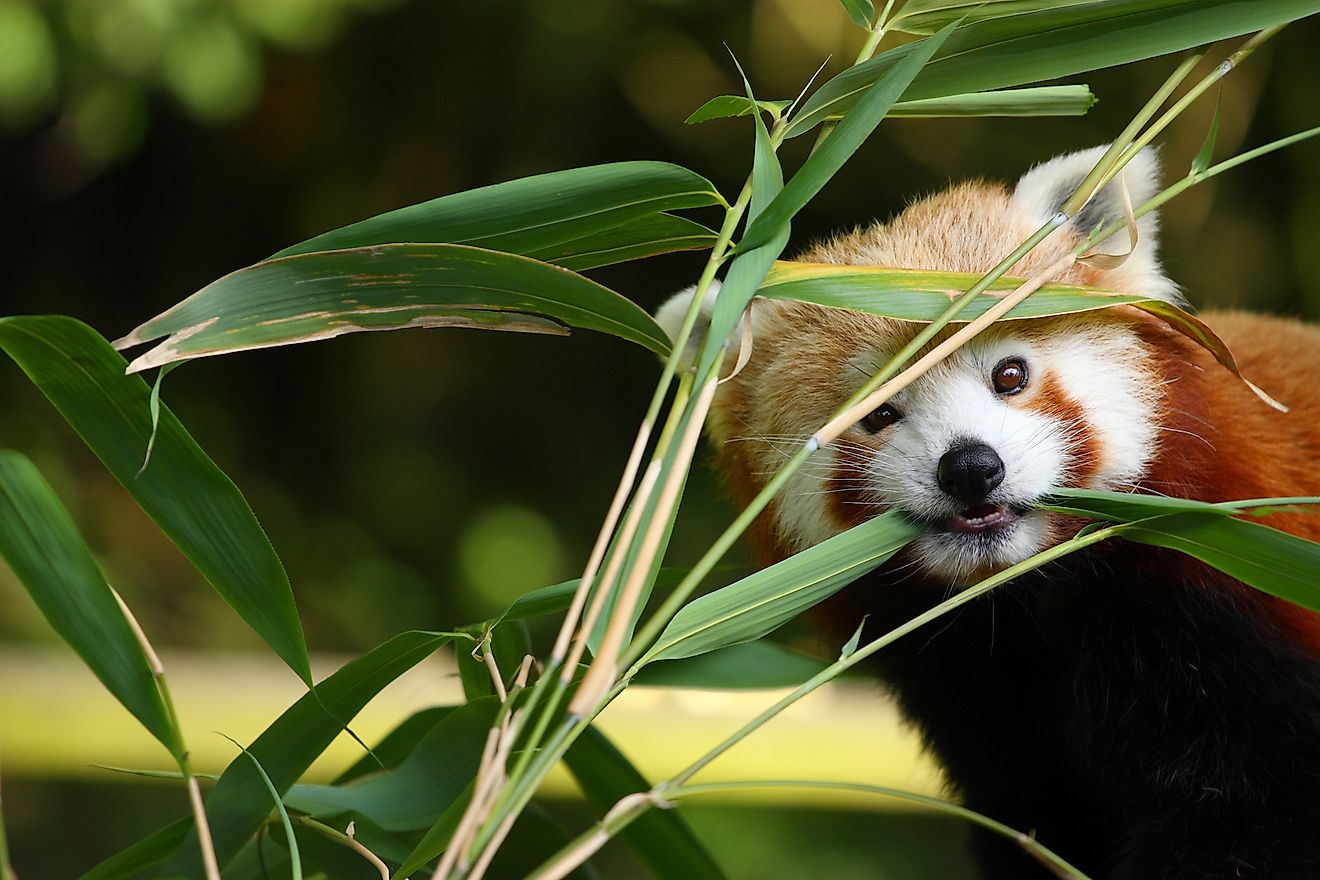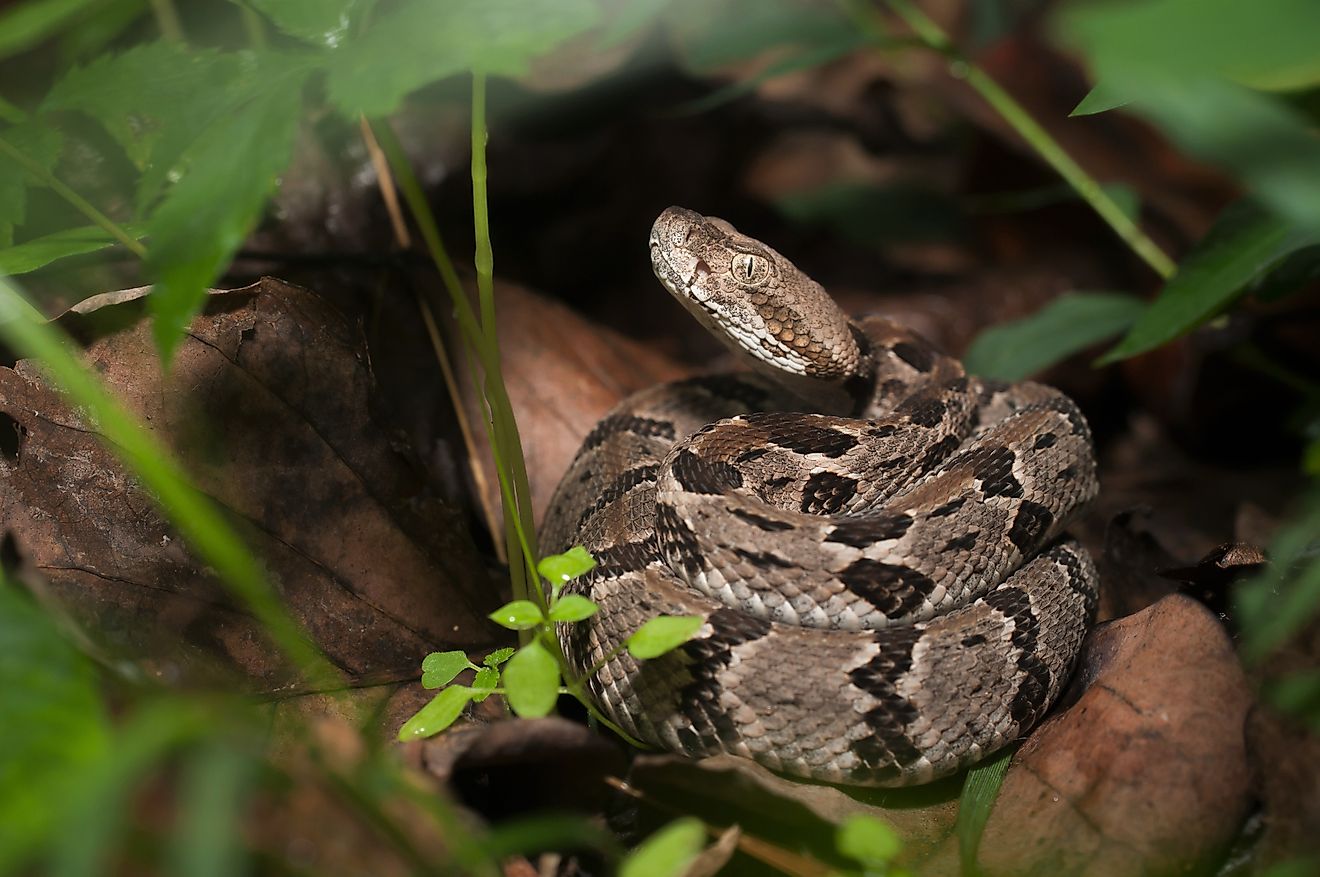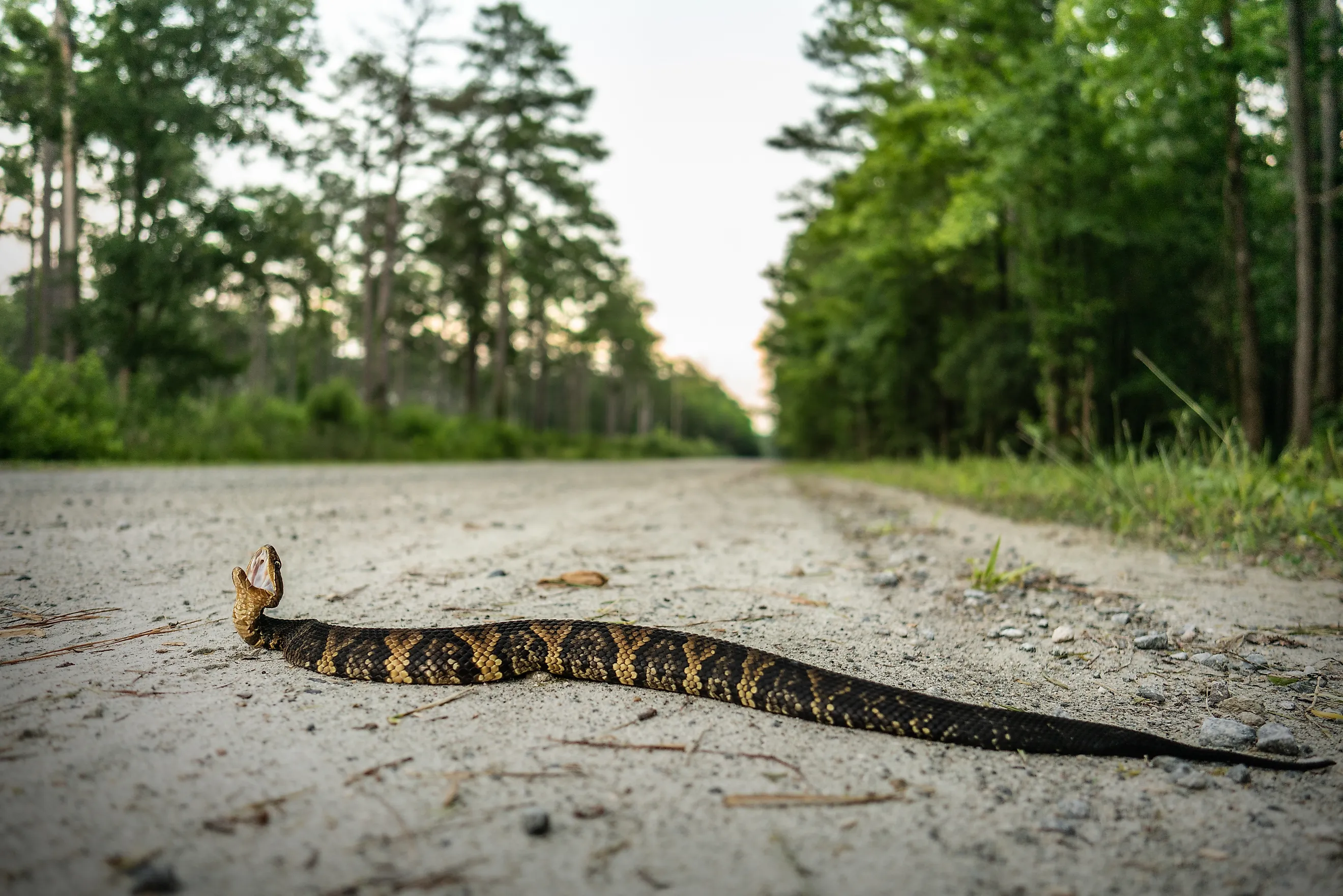
The Venomous Snakes Of Mississippi
Mississippi is perfect for snakes. After all, it sounds like a noise a snake would make. Beyond ssssemantics, it is a subtropical southern state that shelters around 50 species of serpents, just six of which are significantly venomous. In contrast to nonvenomous species like the corn snake or negligibly venomous species like the hognose snake, these envenomators can kill humans—but that does not mean they kill Mississippians. Keep reading to learn about said species and how safe the proverbial Hississippi actually is.
Copperhead
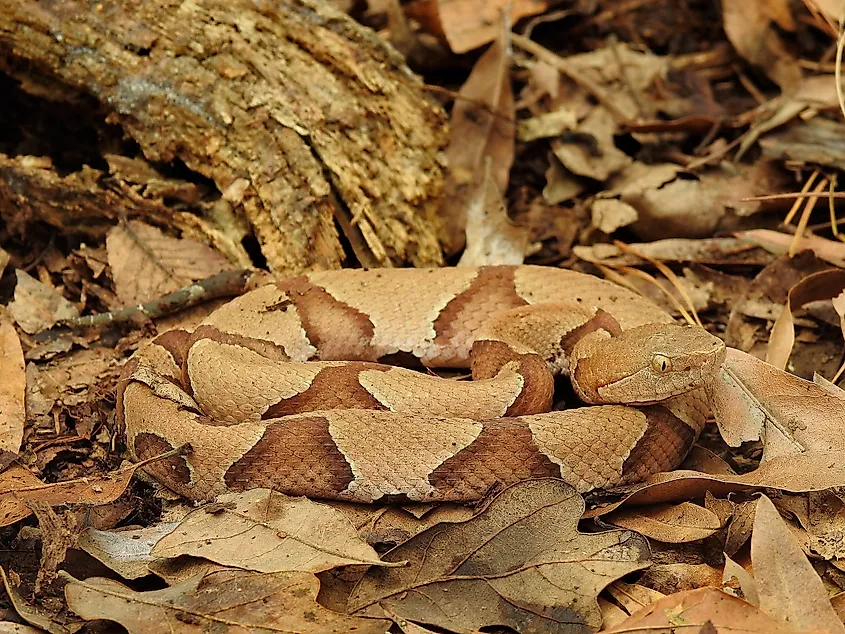
Eastern Copperhead (Agkistrodon contortrix) in leaf litter.
So-called because of its copper coloring, the medium-sized copperhead (Agkistrodon contortrix) is one of the hardest snakes to spot in its natural habitat, which comprises woody, rocky, and leafy areas across Mississippi. As such, residents are sometimes bitten after unknowingly trodding near—or on—a copperhead. This happened to an 18-month-old child in Hamilton, Mississippi in 2016. Fortunately the copperhead has the least significant venom of Mississippi's significantly venomous snakes. The child survived after receiving antivenin, as did a Philadelphia, Mississippi hunter who was bitten on the head by a rare arboreal copperhead in 2020. Fatal copperhead bites are uncommon if not entirely absent in the state. In states where fatalities do occur, the survival rate is still 99.99 percent. Its venom works much better on insects, lizards, and rodents.
Northern Cottonmouth
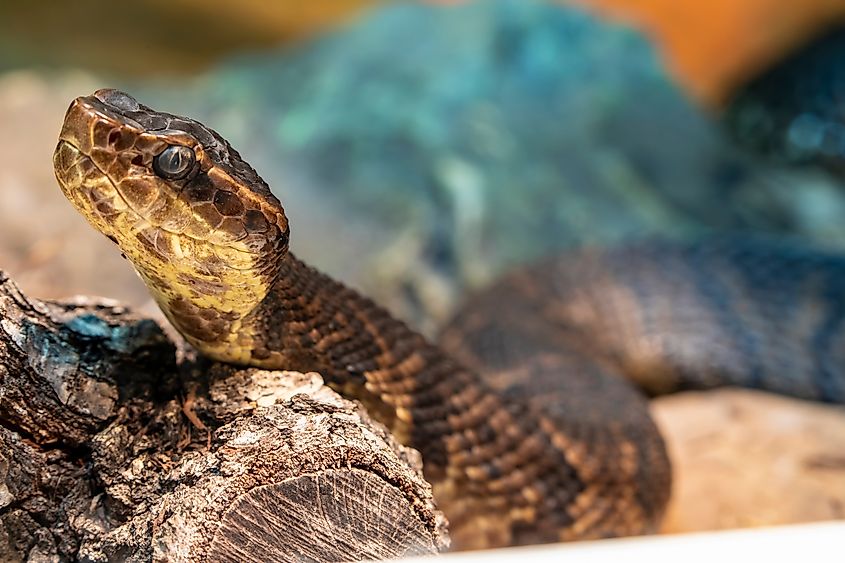
Like the copperhead and all snakes on this list save one, the northern cottonmouth (Agkistrodon piscivorus) is a pit viper, meaning it hunts with heat-sensing pits located between its eyes and nostrils. Separating the northern cottonmouth from other pit vipers, however, is its love of water. Sure, virtually all snakes can swim, but this stout species is a certified aquaphile. It can be found in lakes, rivers, creeks, ponds, marshes, swamps, and even salt water throughout Mississippi. Naturally, it eats fish and frogs.
Also separating the cottonmouth from other vipers is its cottonlike mouth tissue, which it displays to deter predators such as humans. If that doesn't work, a venomous bite might. Yet cottonmouth-caused fatalities are unheard of in modern Mississippi. The northern cottonmouth is one of two cottonmouth species in America. The other is the Florida cottonmouth, which lives in Florida and Georgia. However, the two cottonmouths have made a hybridization zone that includes part of Mississippi. Perhaps the state will soon have a seventh species of venomous snake.
Eastern Coral Snake
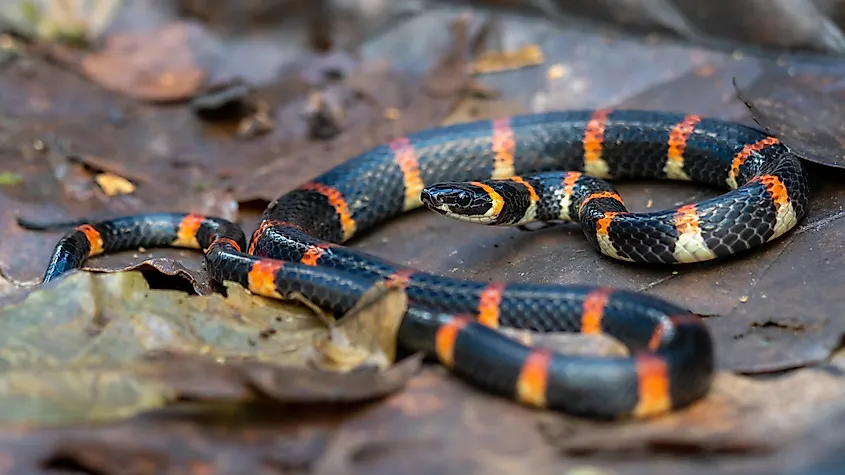
Eastern coral snake (Micrurus fulvius)
The eastern coral snake (Micrurus fulvius) is the only significantly venomous Mississippi serpent that is not a pit viper. It is an elapid, which puts it in the same family as cobras, mambas, and sea snakes. The eastern coral snake looks flashy but is actually introverted, preferring to hide underground while its cousins flaunt their hoods, speed, and swimming ability.
Moreover, though it can grow up to four feet long, it usually stays in the two-foot range—so small that its fangs might not be able to puncture a pant-covered leg. But if they do, get to the hospital immediately. Eastern coral snake venom is more toxic than that of all Mississippi snakes, but because of its size, docility, and notoriety ("red touches yellow, kill a fellow"), bites are rare and the only documented fatality since coral snake antivenin debuted in America happened in Florida. The "victim" was drunk and attacked the snake first. But his worst mistake was not seeking treatment.
Pygmy Rattlesnake
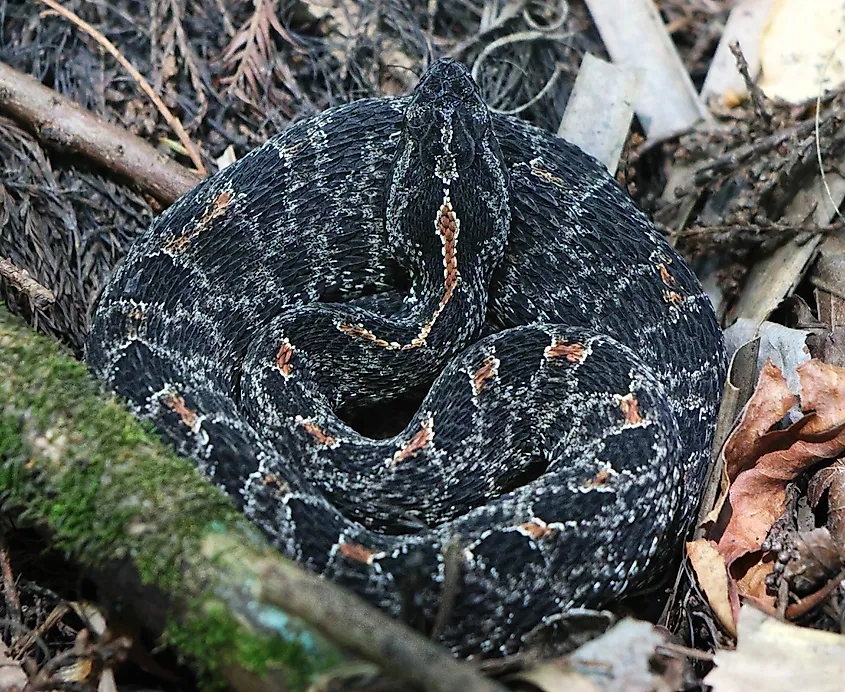
Beautiful Dusky Pygmy Rattlesnake Displaying its Markings.
America's most famous pit viper is, of course, the rattlesnake. But when you picture that infamous reptile, you probably don't see one that, when coiled, is the size of a pine cone. Change your perspective for the pygmy rattlesnake (Sistrurus miliarius), the smallest species of rattler, averaging about a foot and a half in length. It occurs throughout Mississippi as two separate subspecies (although some sources say three). They are the dusky pygmy rattlesnake (Sistrurus miliarius barbouri) and western pygmy rattlesnake (Sistrurus miliarius streckeri). The latter tends to have fewer spots and brighter colors than the former. Both occupy a variety of habitats and eat small animals like insects and frogs.
Though the pygmy rattlesnake's venom is relatively toxic, so little is injected that fatal envenomations are nonexistent in Mississippi and the rest of America. That does not mean a bite should be taken lightly. Extreme pain is to be expected, as should bruising and swelling. Less common but still possible (especially without medical treatment) is necrosis and limb loss.
Timber Rattlesnake
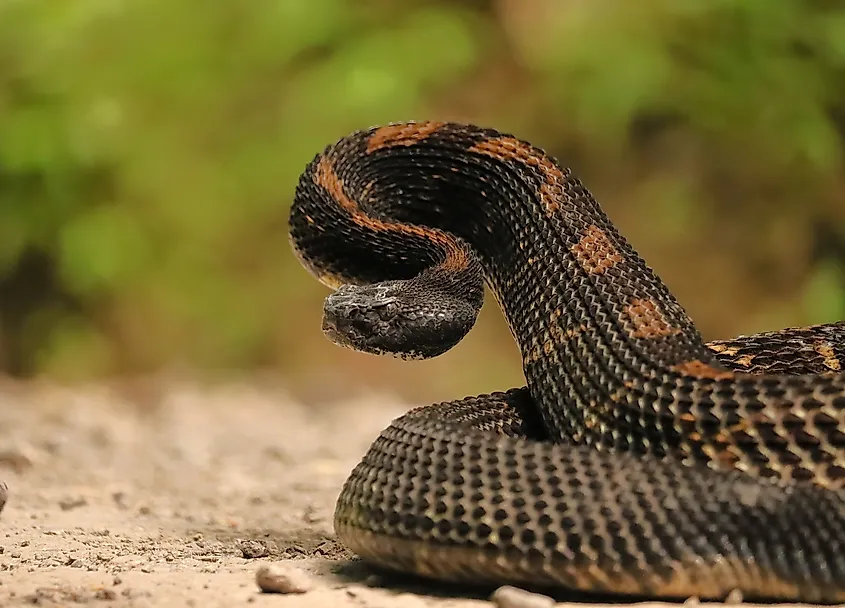
Gorgeous Timber Rattlesnake Black Phase.
Many Mississippians recognize the timber rattlesnake (Crotalus horridus) as the canebrake rattlesnake. It primarily inhabits wooded and brushy environments, ranging from pine forests to cane thickets, where it hunts small mammals like mice, squirrels, and voles. With a length about three times that of a pygmy rattlesnake and the ability to deliver multiple doses of venom, the timber rattlesnake ranks among the most hazardous snakes in Mississippi.
Once again, this doesn't mean Mississippians are frequently bitten by snakes. The Mississippi Poison Control Center reports about 100 to 200 venomous snakebites annually. Of these, roughly 60% are caused by copperheads, 30% by cottonmouths, and 10% by rattlesnakes. Rattlesnakes are easily identified thanks to their distinctive warning rattle, which helps avoid many bites.
In recent decades, the only documented snakebite in Mississippi that may have contributed to a human death involved a rattlesnake. However, since the species was not identified, it was either a timber rattlesnake or one of the other species mentioned.
Eastern Diamondback Rattlesnake
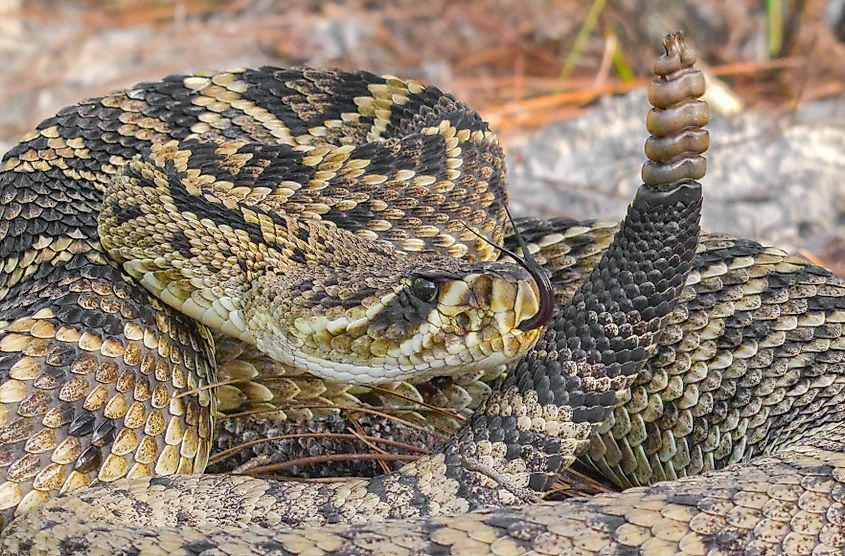
In 2000, an 80-year-old man from Lawrence County was bitten by a rattlesnake, had a vehicle accident while en route to the hospital, and died. This remains the only known snakebite-related death in Mississippi for decades—since the then-managing director of the Mississippi Poison Control Center has not heard of another case since he started working there in 1978. Lawrence County lies within the natural habitat of both the timber rattlesnake and the eastern diamondback rattlesnake (Crotalus adamanteus), with the latter being deadlier. It is not only the largest venomous snake in Mississippi but also the biggest venomous snake in the United States. Its nearly inch-long fangs deliver hundreds of milligrams of venom to rats, rabbits, and occasionally humans. However, like all Mississippi venomous snakes, it bites only when threatened, and with proper treatment, survival chances are nearly 100 percent.
Mississippi hosts around 50 snake species, but only six are notably venomous: the copperhead, northern cottonmouth, eastern coral snake, pygmy rattlesnake, timber rattlesnake, and eastern diamondback rattlesnake. Although bites from these snakes are serious medical concerns, there have been no recorded deaths in the state for decades. Awareness, availability of antivenin, and the high occurrence of 'dry' bites (where no venom is delivered) contribute to the overall safety of Mississippians when it comes to snakes.

